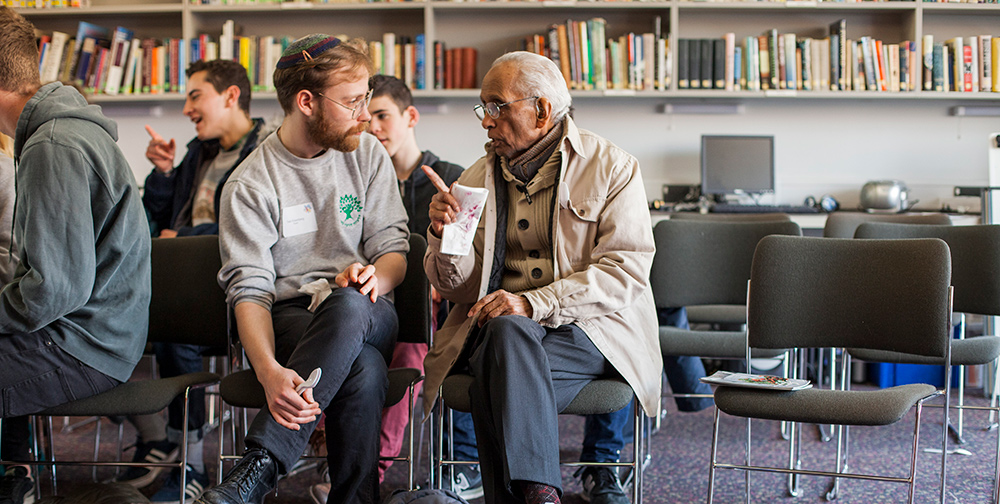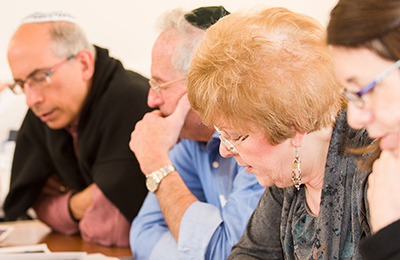Why Do Jews Sway When They Pray?

Responsum:Like many Jewish customs, the origins ofshucklen– a common Yiddish word which means to shake or rock – are shrouded in mystery.1 We can say when it was done and where but not why. This is because many customs were instituted by the Jewish people as a spontaneous expression of their Jewishness; the learned explanations came later.
Shucklenis not explicitly mentioned in the Talmud.2 Interestingly enough, it is first mentioned in a number of Islamic sources. Mohammed is supposed to have said: “Be not like the Jews who whenever they read the Torah publicly move to and fro”. His contemporary, the poet Labid (d. 660), writes of a person who gropes for an object, moving his hand to and fro “like a praying Jew”. 3
Jewish sources also mentionshucklenin the context of Torah study and prayer. Rabbi Samuel Hanaggid of Granada (d. 1056) is the first to mention swaying during Torah study in one of his poems:
And we came angry into the House of God and would that we had taken a wrong turn, for behold the rabbi and the students were swaying their heads like a tamarisk in the wilderness.4
Various reasons have been given for this practice throughout the ages.
Rabbi Judah Halevi of Spain (d. 1141) gives two explanations in his book,The Kuzari, an imaginary
dialogue between the king of the Khazars and a rabbi. The king asks why Jews move to and fro when they read the Bible. The rabbi replies:
It is said that it is done in order to arouse natural heat [i.e., to warm up]. My personal belief [is as follows:]… As it often happened that many persons read at the same time, it was possible that ten or more read from one volume. Each of them was obliged to bend down in his turn in order to read a passage, and to turn back again. This resulted in a continual bending and sitting up, the book lying on the ground. This was one reason. Then it became a habit through constant seeing, observing and imitating, which is in man’s nature.5
Rabbi Simhah of Vitry (France, d. 1105) gives a third explanation. He says that young children are taught to sway when they study the Torah, “for thus we find at the giving of the Torah ‘And the people saw and they trembled’ (Exodus 20:15)”.6
Lastly, the Zohar, which was written in thirteenth-century Spain, asks: Why is it that all the peoples of the world do not sway, but Jews alone do so when they study Torah? The souls of Israel are derived from the Holy Lamp [of God] …when a Jew utters one word of Torah, the light [in his soul] is kindled…and he sways to and fro like the flame of a candle.7
On the other hand, there was a common custom of swaying during prayer. This custom was explained in at least three different ways.
Rabbi Abraham of Lunel (Toledo, d. 1215) and many others quote an unknown midrash:
A person is required to sway during prayer, as it is written: “all my bones shall proclaim: O God, who is like You!” (Psalms 35:10)…And this is the custom of the Rabbis of France and her pious ones.8
The testament attributed to R. Israel Ba’al Shem Tov (d. 1760) gives a different explanation forshucklen:
When a person is drowning in a river and he makes movements in order to extricate himself from the water, those who see him will no doubt laugh at him and at his motions. Thus, when a person prays and makes motions, one should not laugh at him because he is saving himself from the malicious waters which are the. . . foreign thoughts which come to distract him during prayer.9
In other words,shucklenhelps one concentrate on the prayers and say them withkavanah[proper intent].
Lastly, two nineteenth-century authors came up with a truly original explanation forshucklen: Jewish students and rabbis don’t get enough exercise. Therefore, they shuckle when they study and pray in order to get some badly needed exercise!10
Surprisingly, a number of prominent rabbis opposedshucklenduring prayer. They claimed that it was disrespectful11 or that it prevents the properkavanahrequired for theAmidah[the silent devotion].12
In conclusion, Jews have shuckled during prayer and study for at least 1,400 years. While the original reason is not known, most Jews seem to feel that it helps one concentrate during prayer and study. On the other hand, there is certainly no obligation to shuckle. The best rule of thumb is probably that stated by R. Yehiel Michal Epstein (d. 1908):
And during theAmidahthere are some who sway and some who don’t and it depends on the person’s nature. If by swaying, hiskavanahimproves, then he should sway; and a person whosekavanahis clearer when he stands perfectly still should not sway – and [either option] should be done for the sake of heaven…13




